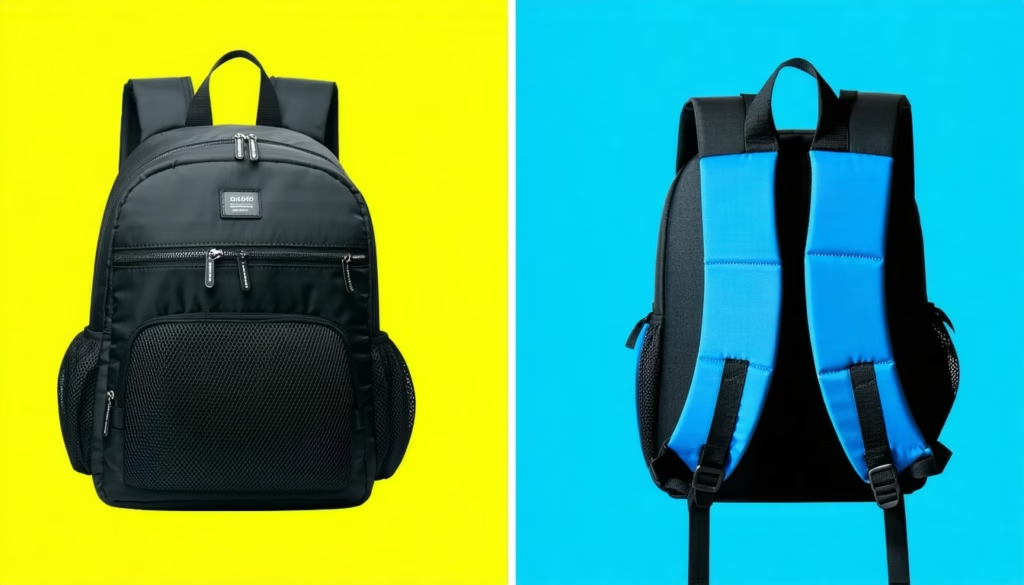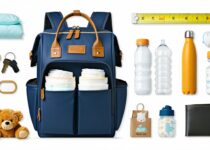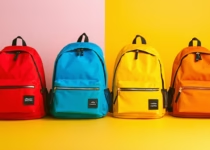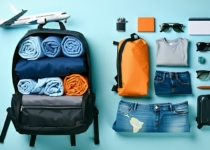Breathable Mesh Vs Padded Back Panels For Teenage Backpacks

Choosing between breathable mesh and padded back panels for teenage backpacks can feel overwhelming. You want a bag that keeps you cool, comfy, and looking great—without adding extra bulk or sweat. In this guide, you’ll get clear, practical advice on these two popular back panel designs. By the end, you’ll know which style matches your daily needs, whether you’re trekking between classes, lugging art supplies, or just hanging out with friends.
Here’s what you can expect
- A friendly breakdown of mesh versus padding
- Key factors like airflow, support, and durability
- Tips for testing backpacks in stores or at home
- FAQs to clear up any last questions
Let’s dive in and find the best back panel style for your next backpack adventure.
Understanding Back Panel Types
Before you pick a new backpack, it helps to know what each back panel offers. Here are the basics:
Breathable Mesh
- Thin layer of open-weave fabric
- Designed to let air circulate
- Often sits over a foam frame
Padded Back Panels
- Generous foam or memory foam layer
- Prioritizes cushioning and support
- May include small ventilation channels
Both styles aim to keep you comfortable, but they do it in different ways. Next up, we’ll look closer at how each one works.
How Breathable Mesh Works
Material And Design
Breathable mesh panels use woven polyester or nylon. The holes in the fabric let air pass between your back and the pack. Underneath, a lightweight foam or plastic frame holds the mesh in shape.
Airflow Benefits
Mesh panels are champions at heat management. They:
- Promote constant airflow
- Prevent hot spots where moisture builds up
- Feel lighter against your skin
Want a quick fix for sweaty school days? Pair a mesh back panel with moisture-wicking clothing and you’ll stay dry longer.
When To Choose Mesh
Mesh works best if you:
- Walk long distances between classes
- Live in a warm or humid climate
- Want a lighter backpack
- Carry loads under 20 pounds
If staying cool is top priority, a pack with a ventilated back panel might be your new best friend.
How Padded Panels Work
Cushioning Materials
Padded panels come in various foam densities. You’ll see:
- Standard polyurethane foam
- High-density EVA foam
- Memory foam inserts
These materials compress under weight, then spring back into shape.
Pressure Distribution
A thicker back panel spreads weight across a larger surface. That helps:
- Reduce pressure points on your shoulders
- Prevent soreness after heavy loads
- Keep stiff items from poking into your back
When To Choose Padding
Opt for padding if you:
- Haul art supplies, textbooks, or sports gear
- Have lower back sensitivity
- Prioritize a cushioned feel
- Go on short hikes with a heavier pack
A padded back panel can feel like carrying a mini mattress for your books.
Comparing Comfort Levels
Comfort can make or break your backpack experience. Consider these factors:
- Heat And Sweat Management
- Impact On Posture
- Load Distribution
| Feature | Breathable Mesh | Padded Back Panels |
|---|---|---|
| Airflow | Excellent, reduces sweat | Moderate, may trap heat |
| Cushioning | Minimal, more firm feel | High, soft under load |
| Weight | Lightweight | Can add ounces depending on foam |
| Posture Support | Basic frame alignment | Enhanced spine support |
| Cleaning And Care | Quick air dry | Spot clean with gentle detergent |
Heat And Sweat Management
Mesh wins on cooling, letting sweat evaporate faster. Padded panels might feel warmer, especially on hot days.
Impact On Posture
Padded foam often includes ergonomic contours to match your spine. Mesh frames can be rigid but flatter, relying on strap adjustments for posture.
Evaluating Durability And Maintenance
Cleaning And Care
- Mesh: Hand wash, squeeze out excess water, then air dry
- Padding: Wipe with damp cloth, mild soap, then air dry
Avoid dryer heat on both types to prevent warping or shrinkage.
Wear And Tear
Mesh can tear if you snag it on sharp objects. Padded panels may compress over time, losing their bounce. Look for reinforced stitching on both.
Style And Aesthetic Impact
Back panel design can influence your entire backpack look:
- Mesh panels often give a sporty, technical vibe
- Padded panels come in sleek or chunky styles
If you love reflecting teen personality with interchangeable backpack straps, choose a panel style that complements your favorite strap sets.
Pricing And Value
Price varies by brand and materials. Here’s a rough guide:
- Budget Packs (Under $30)
- Basic mesh or thin padding
- Mid-Range Packs ($30–$60)
- Enhanced mesh with molded frames or medium-density foam
- Premium Packs ($60+)
- High-tech ventilation systems, memory foam, or hybrid designs
Spending a bit more often buys longer-lasting support and extra features like hidden pockets or hydration straw systems.
Making The Right Choice
Matching Your Needs
Ask yourself:
- How long will you wear the pack daily?
- What’s your average load weight?
- Do you tend to overheat quickly?
- Is back support a health priority?
Your answers will point you toward mesh, padding, or a hybrid model.
Test And Try
If possible, try backpacks in person. Load them with everyday items, adjust the straps, and walk around. Check for:
- Zero pinching or rubbing
- Balanced weight distribution
- Airflow across your back
Remember, a quick trial can save you a semester of sore shoulders.
Frequently Asked Questions
1. Will a mesh back panel prevent all sweating?
Mesh greatly improves airflow but doesn’t eliminate sweat totally. Pair it with moisture-wicking clothing for best results.
2. Can I add extra padding to a mesh panel?
You can tuck in a thin foam sheet, but it may reduce airflow and void warranties.
3. How often should I clean my backpack’s back panel?
Aim to wipe down any sweaty areas once a week, more often if you’re active or in hot climates.
4. Do padded panels add significant weight?
High-density foam can add a few ounces, but most teens won’t notice the difference unless carrying very light loads.
5. Is one style better for posture?
Padded designs with ergonomic contours generally offer more posture support, but proper strap adjustment is key.
6. Can mesh panels tear easily?
Quality mesh with reinforced edges lasts well. Avoid sharp objects and be gentle when cleaning.
7. Are there hybrid backpacks with both features?
Yes, some packs blend mesh ventilation over padded foam. They deliver a balance of cooling and cushioning.
Conclusion
Deciding between a breathable mesh pocket and a padded back panel comes down to your daily routine, comfort preferences, and style. Mesh panels are champions at airflow and lightweight design, while padded panels excel at cushioning and posture support. By weighing these factors, testing in stores, and thinking about your typical load, you’ll land on a backpack that keeps you cool, comfy, and confident all school year. Whether you’re leaning toward mesh, padding, or a hybrid option, your perfect teen backpack awaits.


